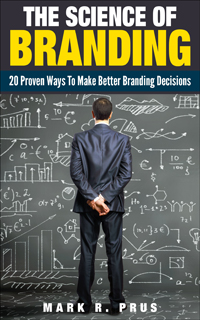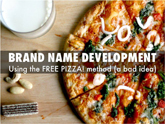Stealth Marketing: How Marketers Use Emotions To Sneak Their Messaging Past Your Brain’s Filters
When your brain uncovers new information, it says: “You Shall Not Pass!” Fans of “The Lord of The Rings” will recognize this as Gandalf’s quote (https://youtu.be/V4UfAL9f74I) or perhaps will recall its use in the “Forgetting Sarah Marshall” movie (https://youtu.be/l7Z05Fq2f58).
Your brain applies this gatekeeper logic to prevent itself from being overloaded by irrelevant information. Just image if you had to pay equal attention to every single stimulus the brain receives…you would be overwhelmed in minutes.
The brain has a well-defined way to deal with information from the environment1. It has strict criteria for allowing incoming information to flow and it effectively uses a three-stage process to filter out irrelevant information. Like the famous “Bridgekeeper” from the “Monty Python and the Holy Grail” movie (https://youtu.be/pWS8Mg-JWSg), the brain requires that information meet three challenges before it is stored in long term memory (and not forgotten).
Stage 1: Sensory Registration – This system filters incoming environmental information to determine how important it is. In milliseconds, the brain evaluates the sensory input and relates it to the individual’s past experiences to decide what to do with it. Most of the time it decides the input is unimportant so it ignores it. This is how you can read a book while your spouse watches television. But this system can also save you because it gives dangerous stimuli (like a gunshot) maximum focus and attention.
Stage 2: Immediate Memory – If the information gets past the sensory register (i.e., gets noticed) it will proceed into the first of two temporary memories where it will be assessed again. The first is called the immediate memory, and it holds information for up to 30 seconds while it decides what to do with it. If the information is deemed important, it will proceed to the next temporary memory. If not, the information will be forgotten. One of the most important functions of the immediate memory is to prioritize input. It is believed that there are 3 levels of priority:
1. Highest Priority = Survival – Data that concerns your survival will be given top priority and the information will be accompanied by a rush of adrenaline, causing a “fight or flight” response that shuts down all unnecessary activities and focuses the brain on the stimulus.
2. Second Priority = Emotions – Data that generates emotions will also be given high priority as portions of the brain will shut down to address the emotional stimulus. Powerful emotions like fear or anger can cause the brain to shut down the ability to talk (“I was dumbfounded”) or move (“I froze in place”). Interestingly, while strong emotional content can shut down conscious processing, it can also enhance the recall of the event by causing the release of hormones that stimulate the amygdala to signal brain regions to strengthen memory.
3. Third Priority = Everything Else – All other data falls to the bottom of the priority list. That does not mean this information is eliminated, but it certainly lessens the odds of generating strong impact in the brain.
Stage 3: Working Memory – If the information gets past the immediate memory, it will proceed into the working memory. The working memory is different because it is where conscious, rather than subconscious, processing occurs. Working memory is constrained by capacity which averages to roughly 7 “chunks” of information in working memory at a time. Working memory is also constrained by time, as testing has shown information can reside there for 10 to 20 minutes. During those 10 to 20 minutes the brain will decide whether to encode this information for long-term storage or forget it. Studies have shown there are two important factors for meeting the challenge for encoding and proceeding to long-term memory:
1. Does this information make sense? – The brain will draw upon past experiences to identify if this new information fits into the person’s understanding of the world. If it does, then it is likely to proceed. If it does not, it is likely to be forgotten.
2. Does this information have meaning? – Is this information relevant to the person? Again, the brain will compare prior experience to attempt to identify relevance. If the information is deemed relevant, it is likely to proceed. If not it is likely to be forgotten.
If the information passes the “make sense?” and “have meaning?” screens in the working memory, it is likely to be encoded for long-term storage by the hippocampus and sent to a retention area of the brain.
Summary: The Three Questions The Brain Asks:
1. Should I notice this?
2. Should I pay attention to this?
3. Should I remember this?
How does Stealth Marketing slide past the brain’s filters? Obviously the goal is to have the brain:
1. Notice Your Messaging
2. Pay Attention To Your Messaging
3. Remember Your Messaging
One simple way would be to make your messaging a “fight or flight” life-threatening risk. However, I suspect that a “buy this or die” pitch would not be conducive to building a long-term customer relationship.
A superior, “stealthy” way to pass the brain’s filters is to embed your messaging in emotion. Here is how emotional messaging gets past the brain’s filters:
1. Sensory Registration – Emotional content gets an automatic pass through the first filter. It will get noticed.
2. Priority Input Into Memory – Emotional content gets high ratings, after the “life or death” ranking of survival content
3. Successful Encoding Into Long-Term Memory – Because emotional content will likely pass the “make sense?” and “have meaning?” screens, it is likely to be encoded for long-term storage
So what does emotional marketing look like?
Southwest Airlines has understood the power of love for quite a while (e.g., their stock exchange ticker symbol is LUV), and their advertising campaign utilizes love in verbal and visual form to drive the “Southwest = Love” point home. Suburu is another company that leverages the power of love in their marketing, including the tagline of “Love. It’s What Makes a Suburu, a Suburu.” The scientific evidence about the persuasive power of love abounds.
Volvo is currently running a “Volvo Wedding” ad that is either very confusing or highly engaging depending upon how the emotional content hits you. Personally I found the :30 ad confusing (https://www.ispot.tv/ad/ASxb/2016-volvo-xc90-wedding-song-by-sharon-van-etten) but the long-form ad showed the full story (https://youtu.be/1Q0ePBvH18c). Your daughter’s wedding day is one of the most emotional days a father can experience, so all the Dads of daughters were no doubt paying attention.
So next time you see a marketer trying to tug at your emotional strings, recognize that they are just trying to get past the brain’s filters and make their messaging a long-term fixture in your head!
1Please note much of the technical information in this post is sourced from this outstanding book (you should buy it!): Sousa, David A. (2006). How the Brain Learns (3rd edition). Thousand Oaks, CA: Corwin Press



